The Plastiki Expedition: A Good Example Of How To Recycle.
A couple of weeks ago, I posted an article about The Great Pacific Garbage Patch. During the research for the article, I came across The Plastiki. I was fascinated by the crews expedition and therefore I thought, I’d write a little bit about it.
What is the Plastiki anyway?
The Plastiki is an 18 m long catamaran made out of 12.500 reclaimed plastic bottles and other waste products. The name might sound familiar to book worms & adventurers…its origin comes from one of the most famous rafts in the world. Do you remember the adventures of Thos Heyerdahl? He crossed the Pacific ocean in 1947 on the Kon-Tiki. The parts that I remember the most out of the book were the stories about the crews encounter with giant squids and sharks. For me, there is almost no greater classic among adventure books than this 104-day-long raft ride from South America to Polynesia. 6 men fighting the elements on a hand-made balsa wood vesel. Insane! As soon as you start reading the book, you won’t be able to put it down! Anyway, now back to The Plastiki ;)
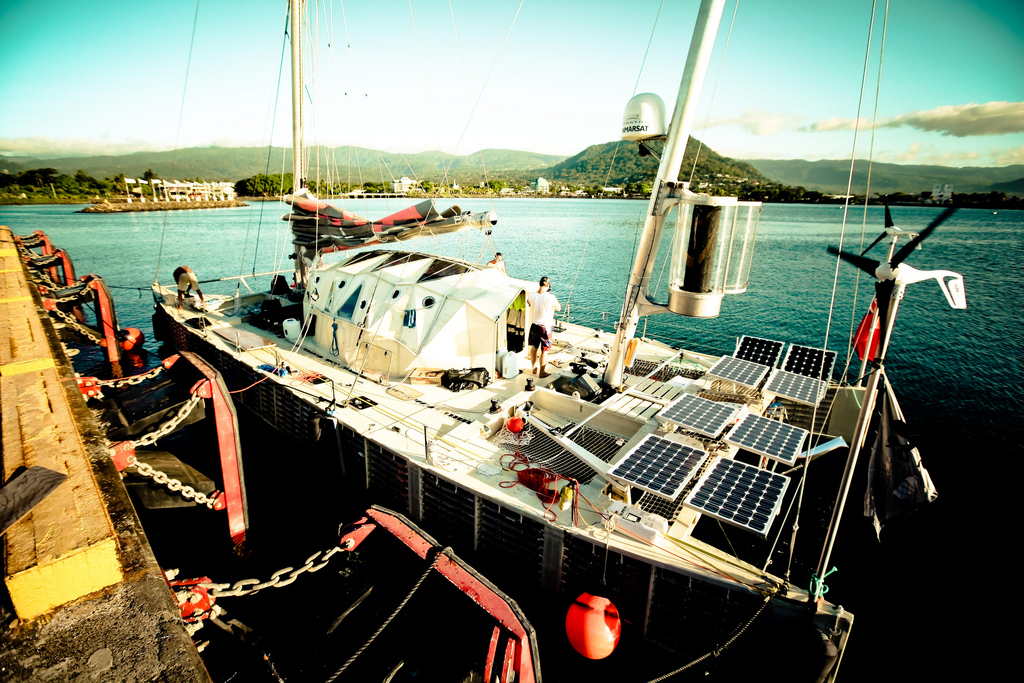
The crew.
Skipper: Jo Royle
Co-skipper: David Thompson
Expedition diver: Olav Heyerdahl
Filmmakers: Max Jourdan & Vern Moen
Expedition leader: David de Rothschild
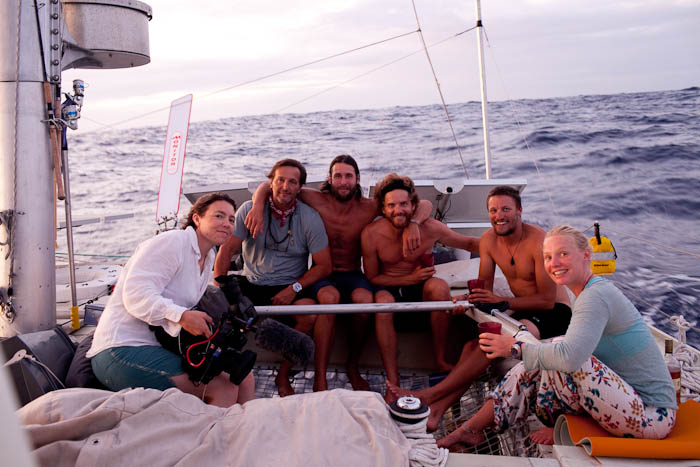
The voyage across the pacific.
In March of 2010, the crew set their sails. But before they did so, the boat was tested for 3 days to make sure she was seaworthy. When she was, their starting point was San Francisco and by the end of July 2010, The Plastiki sailed into Darling Harbour in Sydney. It crossed the Pacific ocean in about four months with more than 10.000 km behind them. It was planned that during the trip, the crew would pass several sites of ecological importance (like the Great Pacific Garbage Patch) or which were susceptible to environmental issues (caused by global warming).
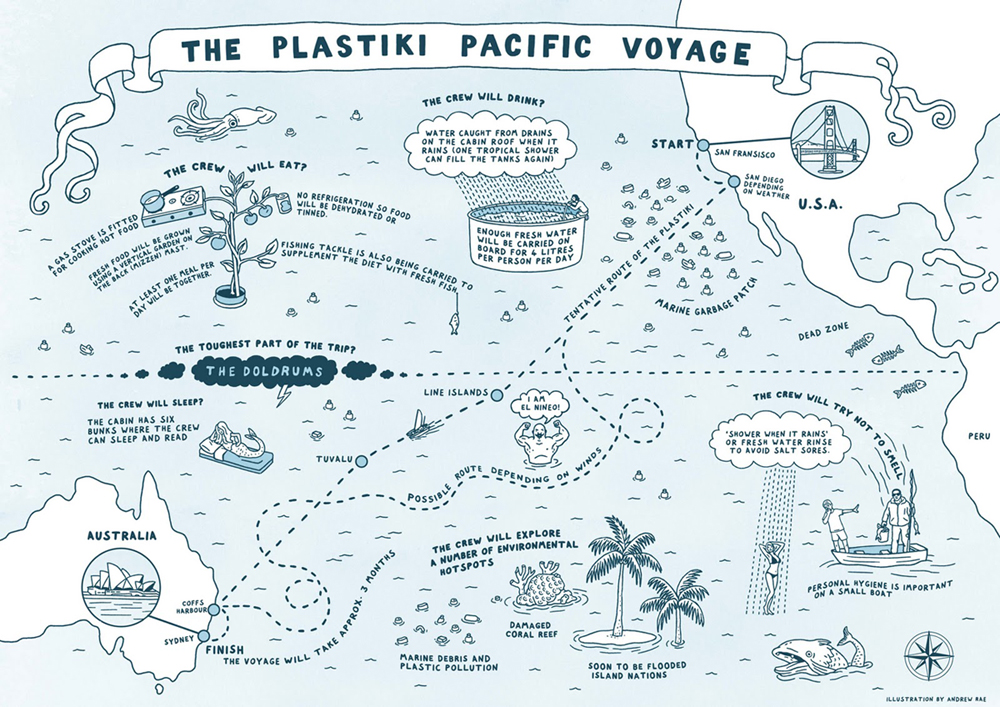
So what did they eat?
This is an interesting question…you might think that the crew ate fish every single day. I mean they sailed across the Pacific ocean, right?! Well, think again…Quote: The Plastiki crew have managed to catch only 3 fish in 40 days, whilst during the Kon-Tiki expedition (over 40 years ago), the crew ate freshly caught fish every day and couldn’t enter the water for fear of sharks. The Plastiki crew have seen no sharks during their expedition. What does that tell us? Overfishing, overfishing & more overfishing…
So why did David de Rothschild want to sail across the Pacific on a plastic boat?
Well, he wanted to do it for a couple of very good reasons: To demonstrate the amazing things people can achieve when recycling their junk & at the same time to show people what happens when they don’t…
Quoted from the website:
- It is estimated that almost all of the marine pollution in the world is comprised of plastic materials. The average proportion varied between 60% and 80% of total marine pollution.
- In many regions in the northern and southern Gyres, plastic materials constitute as much as 90 to 95% of the total amount of marine debris.
- Scientists estimate that every year at least 1 million seabirds and 100,000 marine mammals and sea turtles die when they entangle themselves in plastic pollution or ingest it.
- According to Project Aware, 15 billion pounds of plastic are produces in the U.S. every year, and only 1 billion pounds are recycled. It is estimated that in excess of 38 billion plastic bottles and 25 million Styrofoam cups end up in landfill and although plastic bottles are 100% recyclable, on average only 20% are actually recycled.
My opinion.
I think that this project is absolutely great! Showing people, what you can do with recycled stuff and documenting the whole story around it is fantastic. The Plastiki is a one-of-a-kind project and a good example for other people. Well done!
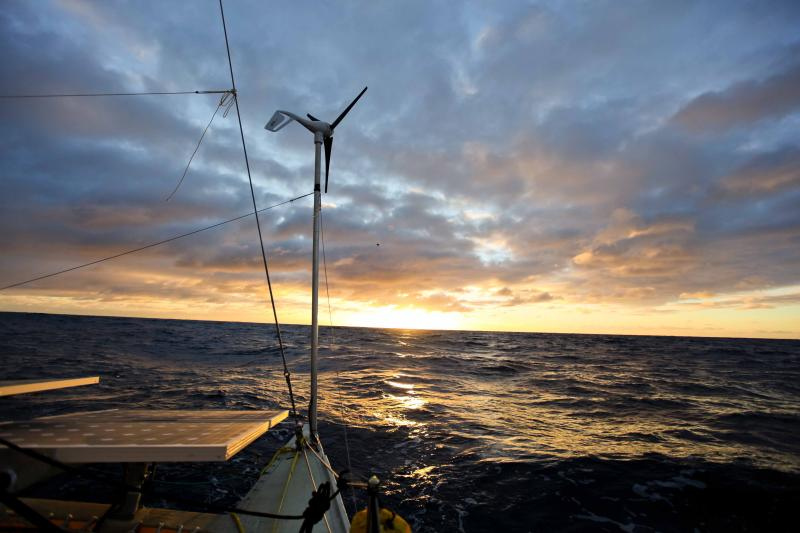
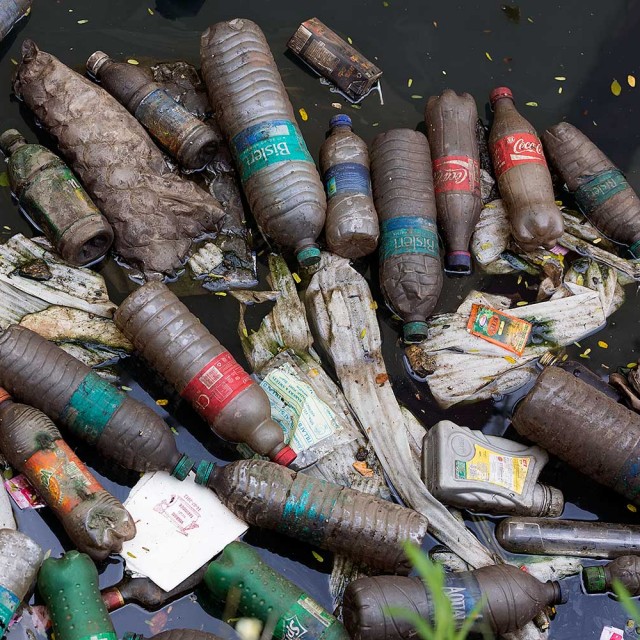
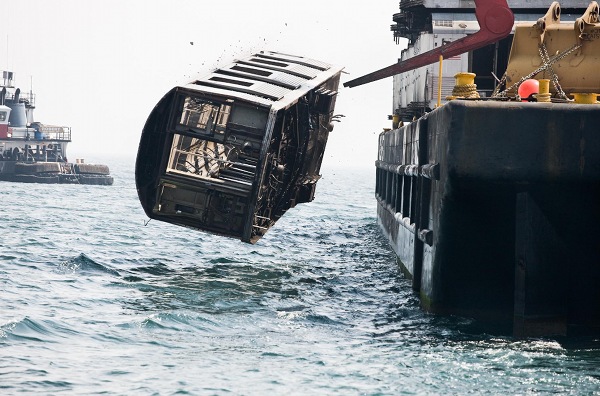
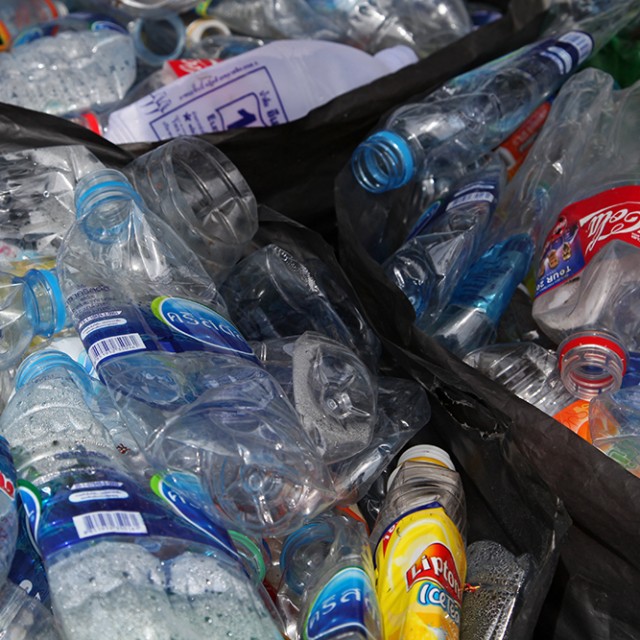
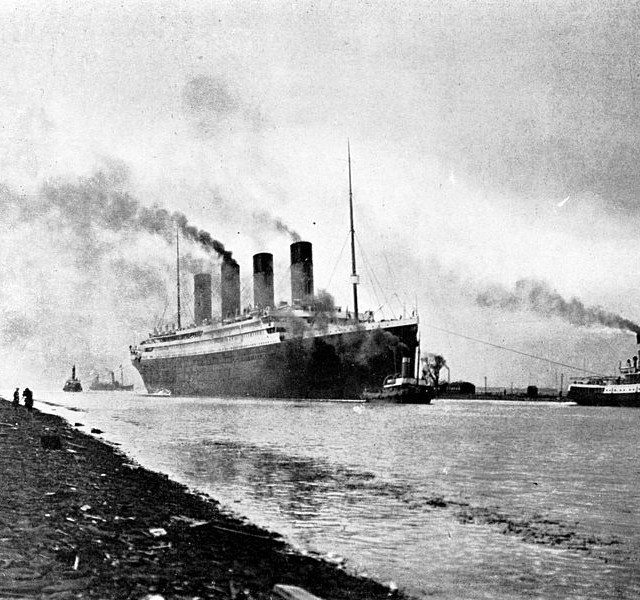
Join the Discussion
“The Plastiki Expedition: A Good Example Of How To Recycle.”
great article, just was thinking that you could recycle the carriages and make an underwater hotel…i bet there’s someone out there thinking of doing something like that ;)
Hey Utuba,
Well, this one’s not too far off from your idea: http://www.cookiesound.com/2011/09/subway-graveyard-of-the-atlantic/
Just that it’s not for humans but sea animals ;)
All the best!